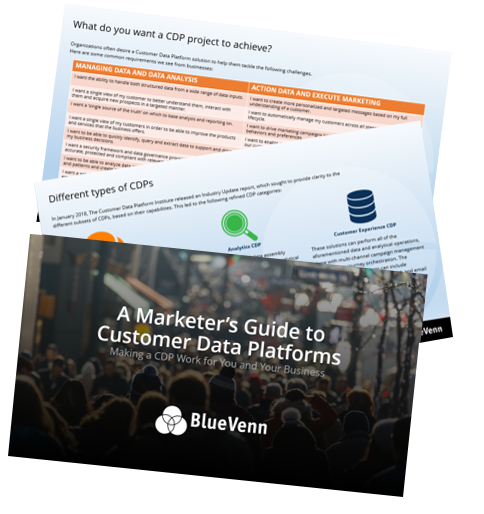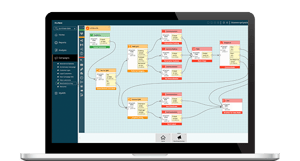 Nobody buys a new car in a hurry. After all, a car is the second most expensive purchase that people routinely make (after a home), and those purely interested in utility or seeking an emergency replacement tend to shop second hand. A new car is a status symbol. It represents who you are, how you live, and what you like to do in your spare time – and that’s without thinking about keeping your family safe, the likely weather and road conditions, and your mileage and environmental preferences. Automotive clients know what they’re looking for and are willing to hold off until they find it. So, the buying journey can take years and approaching the right customer in the right way is absolutely critical.
Nobody buys a new car in a hurry. After all, a car is the second most expensive purchase that people routinely make (after a home), and those purely interested in utility or seeking an emergency replacement tend to shop second hand. A new car is a status symbol. It represents who you are, how you live, and what you like to do in your spare time – and that’s without thinking about keeping your family safe, the likely weather and road conditions, and your mileage and environmental preferences. Automotive clients know what they’re looking for and are willing to hold off until they find it. So, the buying journey can take years and approaching the right customer in the right way is absolutely critical.
That’s why IM Group, the UK distributor of Subaru, turned to BlueVenn to help it more effectively manage its customer data and segment its clients and prospects, in the process more than tripling Subaru test drives and almost doubling sales from test drives by using our software to create a personalized experience that matched would-be buyers’ needs and desires
Getting to know the customer
The problem the group had was that there were 60 Subaru dealerships all over the UK, all keeping their own customer records in their own way, which meant that a lot of information slipped through the cracks. If any customer moved cities, sold their car or jointly owned the car with a partner, this fact went unnoticed. So, lots of customer records were out of date, and where clients had visited more than one dealership, no information on their recorded preferences was shared between the two. A nationwide, shared database was needed, with the capability to group together all information held on a given individual into a single record, laying bare their needs, desires, preferences and what interactions they had previously had with Subaru. Customers could then be grouped into segments, each needing to be targeted with slightly different marketing materials.
A ‘segment’ is a collection of people grouped according to shared characteristics – and that doesn’t just mean basic demographics. The classic demonstration of the pitfalls of relying on demographic information alone is the fact that grouping two men, born in the UK in 1948, with a history of divorce, two or more children, a love of dogs and a fortune of over $1m, would mean classing Ozzy Osbourne and Prince Charles together. That would be a big mistake if you were looking to sell cars. Ozzy, after all, has a reputation for driving gas-guzzling luxury cars including Ferraris and Audis. However, while he has been seen driving similarly extravagant cars in the past (though he favored more traditional, prestigious makes like Bentleys, Rolls Royces and Daimlers), these days Prince Charles’ personal taste tends more towards eco-friendly vehicles, like the electric Jaguar I-Pace and an Aston Martin Volante adjusted to use wine-based fuel.
Discover who your customers are and what they want with the #1 CDP for automotive marketers
LIVE NEXT at:

Gain data insights into your customers’ shopping habits and needs.
Register to watch this demonstration of how analytics and real-time, omnichannel customer journey tools can be used to predict when and what your customer might be interested in buying, so you can engage them with the right message at the right time!
Tuning into the customer’s desires
That means psychographic factors (qualitative psychological attributes) must be taken into account when creating automotive customer segments, such as personal preferences, opinions and emotions. Subaru was also keen to learn from offline data, such as client visits to have their vehicle serviced at a dealership, and online behavior, such as revisiting a particular model’s page or opening links only when they related to SUVs. The reason all of this matters is that a full picture of the customer can only be built up by linking all of their online and offline data, behaviors and interactions. This comprehensive Single Customer View (SCV) can then be leveraged to ensure that everything sent to that customer matches their interests and preferences, and is timed to meet their real-time needs.
For example, take a 38-year-old father of two children under six who currently owns a 2012 Subaru XV. It might be reasonable, looking at all stored data about this customer and the fact that he has recently sent off for a catalog, to assume that email communications emphasizing the wonderful safety features of the 2018 incarnation of the same car, or perhaps social media adverts prompting an upgrade to the no-nonsense Subaru Forester, might hit the spot. However, if the staff at his local dealership were aware that he had been opening everything he was sent about the latest BRZ coupé and periodically visiting its page, they’d know to emphasize this sporty model’s exceptional road handling, powerful engine and eye-catching color options (and hold the safety lecture).
A joined-up system business-wide
 Connecting up Subaru’s data silos – including the website, dealerships, CRM, email system and mobile app - using BlueVenn’s CDP meant that any dealership across the country could get a complete, up-to-date view of each Subaru client or prospect. They could then leverage the omnichannel marketing hub to target them with appropriate offers and content – including calls from sales reps, emails, personalized ads, social media and direct mail - either through traditional avenues or in real-time.
Connecting up Subaru’s data silos – including the website, dealerships, CRM, email system and mobile app - using BlueVenn’s CDP meant that any dealership across the country could get a complete, up-to-date view of each Subaru client or prospect. They could then leverage the omnichannel marketing hub to target them with appropriate offers and content – including calls from sales reps, emails, personalized ads, social media and direct mail - either through traditional avenues or in real-time.
For example, if a customer was sent an email inviting them to book a test drive and they immediately did so, they might receive instant banner ads about cars judged likely to appeal to them, while email communications would be held. If they didn’t book, a series of push emails would be scheduled for delivery (though again, if they booked after receiving the first of a 3-part series, the remaining messages would be held). The customers’ responses to the communications could then be fed back into the SCV to enable further targeting and improved prediction of future behaviors.
Would you like to talk to one of our consultants?

Subaru’s improved strategy pays dividends
All of this enabled Subaru to improve the personalization of its customer communications, ensure they were received on the recipient’s preferred platform, and keep the brand firmly in the minds of would-be buyers by emphasizing the features that interested them. The hundreds of thousands of tailored emails sent out led to the number of inquiries leading to test drives increasing by a factor of 3.2. Test drives are massively important, as they allow a company to ensnare clients’ senses with the new car smell, the sound of the engine, the feel of the upholstery and the thrill of handling the vehicle on a winding road. That means suggesting the right car to test and pitching effectively is vital, something that knowing about their needs, lifestyle and intended budget makes much easier.
Test drives leading to sales were boosted by a factor of 1.6, and triggered surveys at the key points of brochure request, test drive booking and sale along the customer journey meant the company’s segmentation got better and better. As well, the closed, connected data system meant that not only was each dealership able to evaluate its performance and respond accordingly, but the different dealerships could benefit from knowing what was or was not working for all the others to drive engagement and conversions, allowing them to improve their own strategies.
Why segmentation matters
 Although especially critical in the automotive arena, segmenting effectively to position your brand as a standout, top player in its niche is a winning strategy for any industry, as it helps businesses to allocate their marketing budgets wisely, target groups likely to be interested in their products, ensure communications mean something to the recipient and send them on the right channel, leading to improved customer satisfaction.
Although especially critical in the automotive arena, segmenting effectively to position your brand as a standout, top player in its niche is a winning strategy for any industry, as it helps businesses to allocate their marketing budgets wisely, target groups likely to be interested in their products, ensure communications mean something to the recipient and send them on the right channel, leading to improved customer satisfaction.
Find out more about segmentation and how it can help you engage the right customers and boost the revenue generated by marketing campaigns.
Want to know more? Download the ‘Marketer’s Guide to Customer Data Platforms’ eBook

Download a copy of the ‘A Marketer’s Guide to Customer Data Platforms’ eBook to gain CDP advice, learn how a CDP differs from other data management technologies, or discover different types of CDPs and what to look out for when researching technology vendors.












